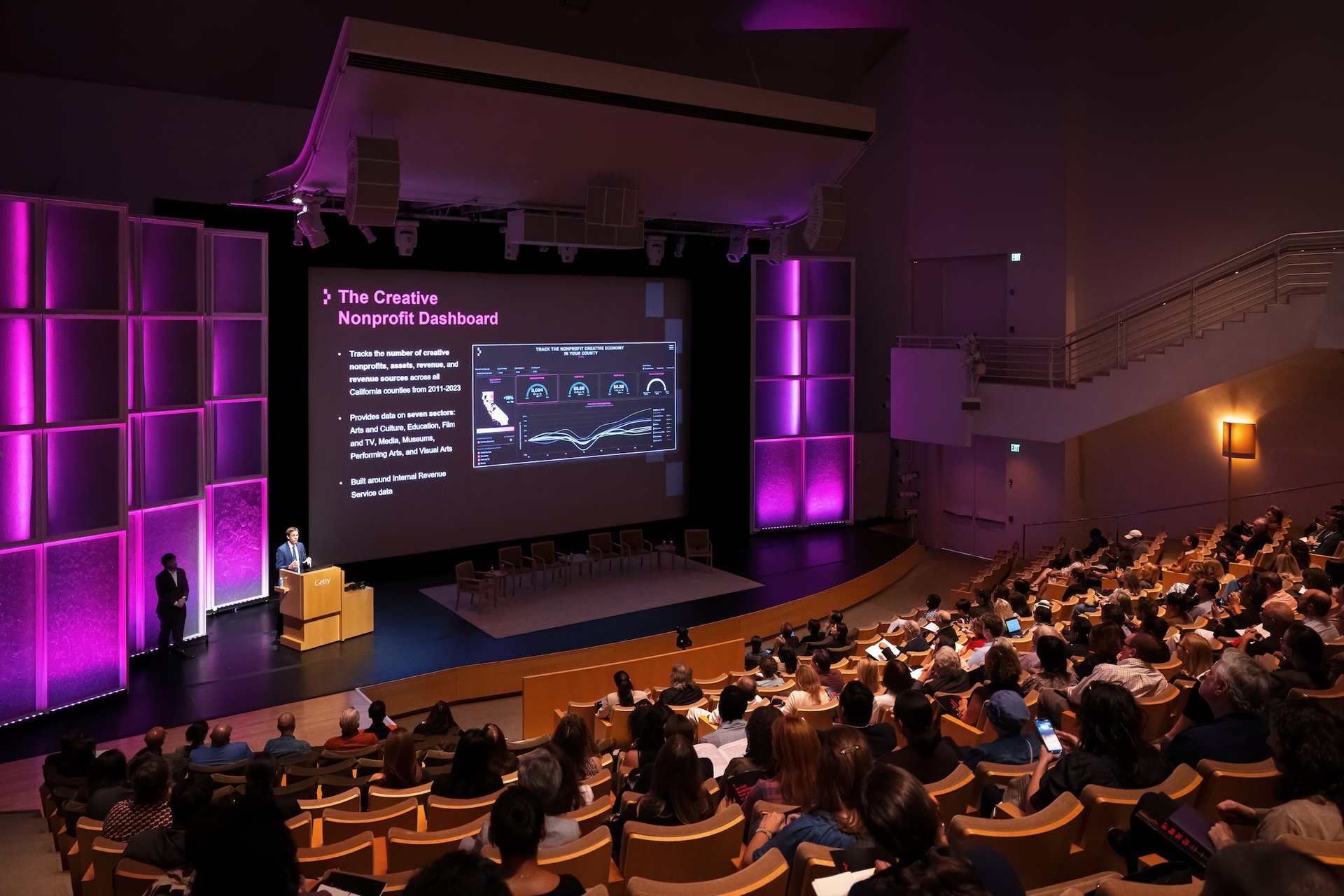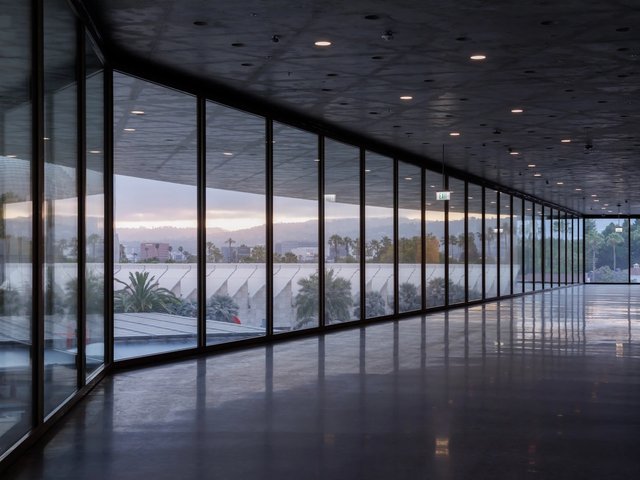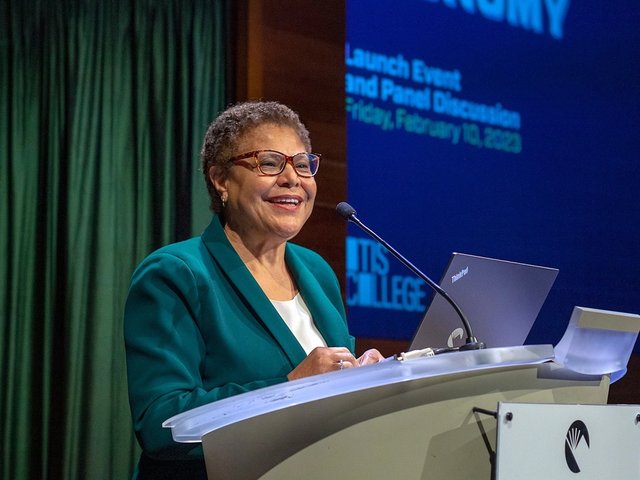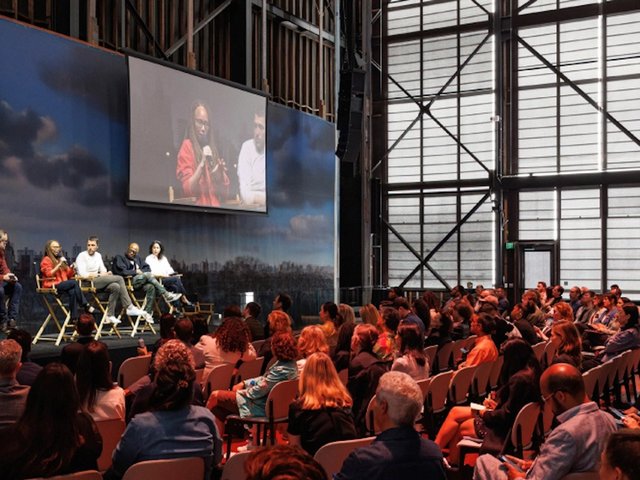Statistics can be sleep-inducing if they do not show a significant trend or impending disaster. At the Getty Center in Los Angeles last month, the title of the latest Otis College Report on the Creative Economy, In the Shadow of the Pandemic Cliff, certainly turned some heads.
Presentations started positively enough with welcomes, including one from Joan Weinstein, the director of the Getty Foundation who was recently named vice president of Getty-wide programme planning. The session focused on the nonprofit arts sector, and Weinstein cited its “vital role” in both Los Angeles and California at large. “The arts are not only an economic engine,” she said. “The arts add value to our lives in so many other ways. They anchor our neighbourhoods, they help us tell our diverse stories, and art and social-justice movements have been intimately linked throughout history.”
Organised by Otis College of Art and Design, the periodic report is prepared by Westwood Economics and Planning Associates under its two founding partners, Patrick Adler and Taner Osman. This most recent report focuses on “creative nonprofits”, including museums, art schools and performing-arts organisations.
Osman introduced the audience to the report’s new online dashboard, which can be used to focus on data by an organisation’s size, location, assets and revenue. The information has been derived from public Internal Revenue Service (IRS) data—since nonprofits have to file with the IRS every year—plus interviews and surveys conducted by Westwood.

Photo: Sarah Galonka/Otis College of Art and Design
The dashboard is loaded with data from 2011 to 2023, which finds, for example, 925 nonprofit cultural organisations within Los Angeles County. The nonprofits are split into seven categories—such as education, museums and visual arts. Some of the information may not be surprising, but it does back hunches and could be helpful for long-term planning and future applications for funding. In 2023, these Los Angeles County organisations reported assets of $3.2bn, with museums at the top of the list at $2.4bn. Performing arts were a distant second with $328m. “Museums are asset-rich,” Osman said. This makes sense, as they often hold collections worth millions.
In Adler’s presentation, he focused on Los Angeles County during the years 2018-23, framed into the familiar “three acts” of many Hollywood films—painting the picture just before, then during the Covid-19 pandemic and ending with something of a cliffhanger.
Unexpectedly, the first couple years of the pandemic, starting in 2020, proved a time of financial growth. As special funding was made available, revenues increased by 47% for nonprofit creative organisations. Enjoying the most increases in revenue were those dedicated to the visual and performing arts and media. However, as relief funding faded, so did both other government and private grants. The 2023 survey of institutions (with 121 respondents) reported that 60% had less public funding in the preceding 12 months, and 51% had less money from private donations over the same period. Adler called this the “Covid cliff”, a term that was picked up during the panel discussion that followed.

Photo: Sarah Galonka/Otis College of Art and Design
The panel included Jason Foster (president and chief executive of the open-air museum Destination Crenshaw), Gustavo Herrera (chief executive of Arts for LA), Naima Keith (vice president of education and public programmes at the Los Angeles County Museum of Art) and Thor Steingraber (executive and artistic director of the Younes and Soraya Nazarian Center for the Performing Arts).
Keith confirmed the basic findings of the report, having faced tighter funding recently. “We were very fortunate in that we didn’t have to lay off any employees,” she said. “However, we still have to think quite seriously about the types of programmes we are doing.” She said Lacma had to rebalance its offerings, moving away from online to more in-person experiences, which is what its audience wants these days. “We’re thinking a lot about the future,” she said. “We’re opening a huge new building in April, and it’s an opportunity to celebrate our campus and also celebrate Los Angeles.”
Destination Crenshaw is an ongoing project along 1.3 miles of Crenshaw Boulevard, celebrating the Black history and culture of the city. “Our federal funding got taken away in November 2024, because we are unapologetically Black and are not changing our website and what we say,” Foster said. Destination Crenshaw had to cut programmes and staff to adjust, but Foster believes the organisation should take this opportunity to strengthen its ties to the community.
The panelists ended by discussing the upcoming 2028 Summer Olympics, which will bring many visitors (and their pocketbooks) to Los Angeles. Might some of them be directed to the city’s wealth of cultural institutions? This is, of course, the hope—and perhaps a way to steer clear from the Covid cliff.






